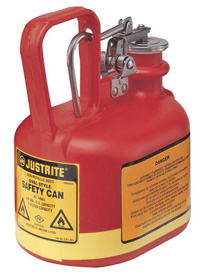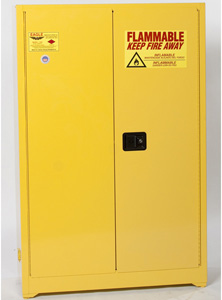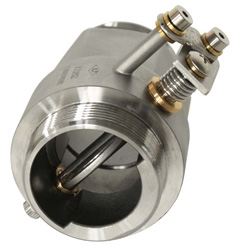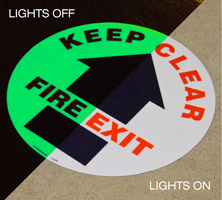| The Home page of ILPI's Safety Data Sheet (SDS) Resource, the leader in SDS information since 1995! | |
| The history and philosophy behind this resource. | |
| A curated collection of books and reference materials concerning Safety Data Sheets and closely related topics. | |
| Paste your plain text SDS into the SDS-Demystifier, and it will be converted into a hypertext-enriched document with links to detailed explanations of each key term. | |
| An extensive list of frequently asked questions about Safety Data Sheets including regulations, content, compliance, and more. | |
| A humorous take on Safety Data Sheet jargon. Fill in the blanks on our entry form to generate a personalized Unsafety Data Sheet to share with your coworkers. | |
| Since 1995, we've maintained this massive curated list of the best places to find Safety Data Sheets on the Internet. | |
| You are here! Way more than a glossary, this hypertext-enhanced resource covers hundreds of SDS-related terms and expert knowledge. Each entry includes both the SDS relevance and links to additional authoritative resources. | |
| Archived results of Safety Data Sheet related polls taken by some of our millions of site visitors | |
| The OSHA regulations behind SDS regulations, including the inspection guidelines and over 400 official interpretations letters under the Hazard Communication Standard | |
| Commercial suppliers of SDS authoring and management software as well as cloud compliance services. | |
| Commercial companies that will create SDS's for your specific needs as well as SDS translation companies. |

Safety signs, banners, and scoreboards? Get yours at Safety Emporium!

Store and dispense flammable liquids safely with flammable liquid safety cans from Safety Emporium.
Definition
A flammable material can be a solid, liquid or gas. The U.S. Occupational Safety and Health Administration (OSHA) defines a flammable liquid as "any liquid having a flash point at or below 199.4 °F (93 °C)."
Compare this definition to combustible, which indicates a material that is somewhat harder to ignite (flash point above 100 oF).
Note: The older term, inflammable is identical in meaning to flammable. To avoid confusion, only use the term flammable.
A material that is not flammable is called nonflammable.
Flammable solids and Flammable gases each have separate entries in this HyperGlossary.
For something to catch fire or explode, there has to be the right mix of heat, fuel and oxygen. These are defined by the flammable limits (also called the explosive limits) which are unique for each material.
Additional Info
OSHA Standard 29 CFR 1910.106, Flammable Liquids, has extensive information on the topic. The Standard divides flammable (and combustible) liquids into four classes:
| Category | Criteria |
| 1 | Flash point < 23°C (73.4°F) and initial boiling point ≤ 35°C (95°F) |
| 2 | Flash point < 23°C (73.4°F) and initial boiling point > 35°C (95°F) |
| 3 | Flash point ≥ 23°C (73.4°F) and ≤ 60°C (140°F) |
| 4 | Flash point > 60°C (140°F) and ≤ 93°C (199.4°F) |
The Standard covers the following items:
- Tanks and their construction
- Piping, valves and fittings
- Container and portable tank storage
- Industrial plants
- Bulk plants
- Service stations
- Processing plants
- Refineries, chemical plants, and distilleries

Store your solvents safely with flammable storage safety cabinets from Safety Emporium.
The Flammable Liquid Standard also covers the design, construction, and capacity of flammable storage cabinets. Paragraph 1910.106(d)(3)(ii)(a) requires "the bottom, top, door, and sides of cabinet shall be at least No. 18 gage sheet iron and double walled with 1-1/2 inch air space. Joints shall be riveted, welded or made tight by some equally effective means. The door shall be provided with a three-point lock, and the door sill shall be raised at least 2 inches above the bottom of the cabinet." The cabinets must pass specific testing requirements/approvals and be labeled in conspicuous lettering with the statement Flammable - Keep Fire Away. Not more than 60 gallons of Category 1, 2, or 3 flammable liquids, nor more than 120 gallons of Category 4 flammable liquids may be stored in a storage cabinet.
Cabinets built to these specifications meet NFPA Code 30 requirements. If self-closing (see next paragraph), they also meet NFPA 1 and the International Fire Code (IFC) requirements. The codes are designed to provide up to 10 minutes of protection. providing enough time for personnel to evacuate and/or for fire sprinklers to kick in. Justrite has a two page summary of design and testing that explains this in more detail. Cabinets built to European standards EN 14470-1 and EN 14727 utilize intumescent seals that swell when heated as well as insulation boards to achieve up to 30 to 90 minutes of fire resistance.
Flammable storage cabinets aren't effective if they are left open, so their doors should never be physically propped open with an object such as a chair or brick. Self-closing flammable storage cabinets have built-in door prop mechanisms that allow the user to prop the door open during use (similar to how a screen door automatic closer operates), but have a fusible link that will melt when exposed to fire, thereby closing the door before the contents can ignite. States which have adopted NFPA 1 or the IFC (such as California), require flammable storage cabinets to be self-closing. Justrite maintains a list of safety cabinet self-close vs manual by state jurisdictions; note that local codes may supercede these.
If your existing flammable storarge cabinets have a manually operated door, retrofit kits are available to convert them to self-closing. You may wish to check with your state/local code enforcement office as well as the manufacturer before installing a retrofit kit to ensure that your alteration of the cabinet will not affect the performance or warranty. When purchasing a new cabinet, the price difference between a manual and self-closing model is typically in the range of 10-15% of the total price and is definitely worth worth the added cost!
Flammable liquids should be stored in suitable containers. For flammable solvents or fuels that are routinely dispensed, a safety can with a flame arrestor and bonding/gronding capability is recommended. Dispensing liquids such as methanol from glass jugs can result in flame-jetting, a catastrophic event that essentially turns the bottle into a flame thrower.

Vent your flammable storage safety cabinets safely with Safe-T-Vent thermally-actuated dampers from Safety Emporium.
SDS Relevance
NFPA reports that "In 2007-2011, U.S. municipal fire departments responded to an estimated average of... 160,910 fires per year starting with ignition of a flammable or combustible liquid...The flammable or combustible liquid fires resulted in an estimated 454 civilian deaths, 3,910 civilian injuries, and $1.5 billion in direct property damage per year." Always consult the Safety Data Sheet when working with materials that are flammable or combustible.
Proper storage and use of flammable materials is absolutely critical in maintaining a safe work place. Never use flammable materials near sources of heat, flame, sparks or static discharge (direct sunlight, furnaces, pilot lights etc.) or in unventilated areas. Solvent vapors are heavier than air. These can pool in low-lying areas and travel significant distances to an ignition source. Never store flammable liquids such as gasoline in a basement or garage where vapors could be ignited by a pilot light or other source.
Flowing liquids can generate static electricity. When transferring liquids from one container to another, even plastic ones, be sure to follow proper bonding and grounding procedures. The Canadian Centre for Occupational Health and Safety maintains a fact sheet on how to How to Work Safely with - Static Electricity.
Also be careful when cutting or welding fuel storage tanks and pipes. A number of fatal accidents have occured when residual vapors were ignited by sparks or flames - see the CSB and OSHA links below for examples.
Further Reading

Fire safety includes fire signs, tags and labels from Safety Emporium.
- View our entry on the National Fire Protection Association and its fire diamond codes.
- Visit the National Fire Protection Association home page for fire safety information, tips and codes.
- OSHA Fact Sheet Fire Safety In The Workplace.
- The US Chemical Safety Board has documented multiple cases of workers who died during "hot work" incidents involving flammable liquid storage tanks.
- OSHA has at least 753 reports of deaths and injuries caused by flammable liquid accidents.
- NFPA has a 2014 report on fires starting with flammable gas or flammable or combustible liquid. Available thanks to the Internet Archive.
- Princeton University has a multipage resource on flammable liquid storage and handling.
- Standard Operating Procedure: Flammable Liquids at Yale University.
- Chemical Demonstration Safety Information here at ILPI lists multiple examples of flame jetting incidents that have caused numerous horrific injuries.
- An example of a basement explosion caused by ignition of varnish and laquer thinner vapors that reached a furnace pilot light.
- Effective Grounding & Bonding of Flammable Liquid Containers Prevents Fire Losses from GAIG.
- OSHA Fact Sheet Internal Combustion Engines as Ignition Sources has lots of tips for workplaces that use flammable liquids.
See also: combustible, flash point, flammable gas, flammable solid, flammable limits.